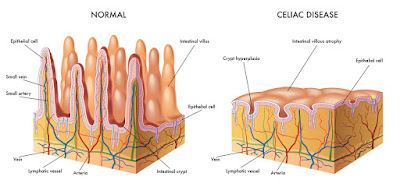Cri du chat syndrome (“cry of the cat” in French) is a genetic disorder caused by the loss or misplacement of genetic material from the 5th chromosome. It was first identified in 1963 by Professor Lejeune, who also identified the genetic cause of Downs Syndrome. He named the syndrome after the sound that many of the babies and young children make when crying.
This syndrome is caused by a missing portion of the 5th chromosome. Chromosome 5 is very important for cell growth, and can cause the syndrome to develop if it is damaged or missing. This occurs during the development of the actual sperm or egg, not during fetus development and not after birth. This syndrome begins at the very root of creation.
The high pitched cry that sounds like a cat is caused by the larynx developing abnormally due to the chromosome deletion.
Not all people with cri du chat will have all the symptoms. They will vary among individuals based on the amount of the chromosome that has been deleted. Some show very few symptoms, while others have a wide spectrum of issues.
The following is a list of some of the symptoms:
- High-pitched cat-like cry. This becomes less apparent with time
- Mental retardation
- Delayed development
- Distinctive facial features
- Small head size (microcephaly)
- Wide spaced eyes (hypertelorism)
- Low birth weight
- Weak muscle tone (hypotonia) in infancy
- Difficulty with language. Half of children learn sufficient verbal skills to communicate. Some learn to use short sentences, while others express themselves with a few basic words, gestures, or sign language
- Delays in walking
- Hyperactivity
- Scoliosis (curvature of the spine)
- A small percentage will have serious organ defects
Treatment
There is currently no treatment, or cure, for cri du chat. Supportive care and early intervention can help children to get to their full potential. The following can be very helpful to achieving a full, satisfying life:
- Physical therapy, which can improve the poor muscle tone
- Speech therapy can stimulate the language ability
- Communication alternatives (if needed) like sign language. This can be used to replace the delayed communication development
- Occupational therapy can help children learn coping strategies and life skills they can use later in life.
“Well Plucky, there are a few other interesting things that we haven’t talked about...”
- In 80% of the cases, the chromosome carrying the deletion comes from the father’s sperm rather than the mother’s egg.
- Deletions during the formation of an egg or sperm are caused by unequal recombination during meiosis (a process where a single cell divides twice to produce four cells containing half the original amount of genetic information. These cells are our sex cells.) Recombination normally occurs between pairs of chromosomes while they are lined up at the metaphase plate (an imaginary plane perpendicular to the spindle fibers of a dividing cell, along which chromosomes align). If the pairs of chromosomes don’t line up correctly, or if the chromosome breaks aren’t repaired properly, the chromosomes can gain or lose pieces. Unequal recombination at a certain location on chromosome 5 causes cri du chat syndrome.
- Some will get gray hair earlier than most people.
“One other thing that was mentioned here was microcephaly. We have been hearing and reading about this everywhere. This is another very rare disease that the experts believe is caused by the mother being infected with the Zika virus while pregnant. Microcephaly is a serious birth defect characterized by an abnormally small head. In Brazil, this congenital malformation is typically rare—only about 150 babies among the nearly three million born in the country each year are diagnosed with microcephaly. However, since October 2015, close to 4,000 cases of microcephaly were reported in Brazil, and many of the cases come from the northeast corner of the country.
In response to the dramatic rise in shrunken heads, the World Health Organization (WHO) declared a public health emergency. This is significant because there have only been three other times, since 2007, the WHO issued such a declaration. This will get scientists and global resources focused on the problem.





































